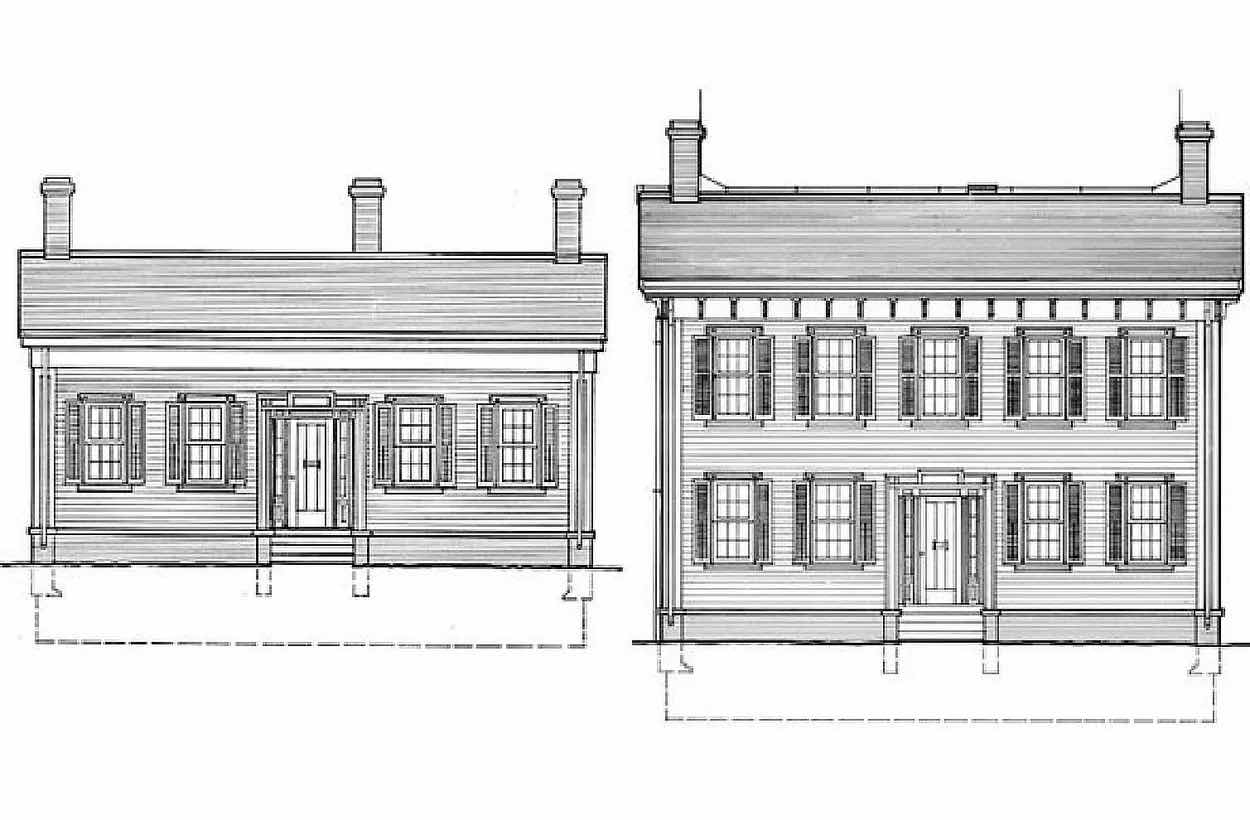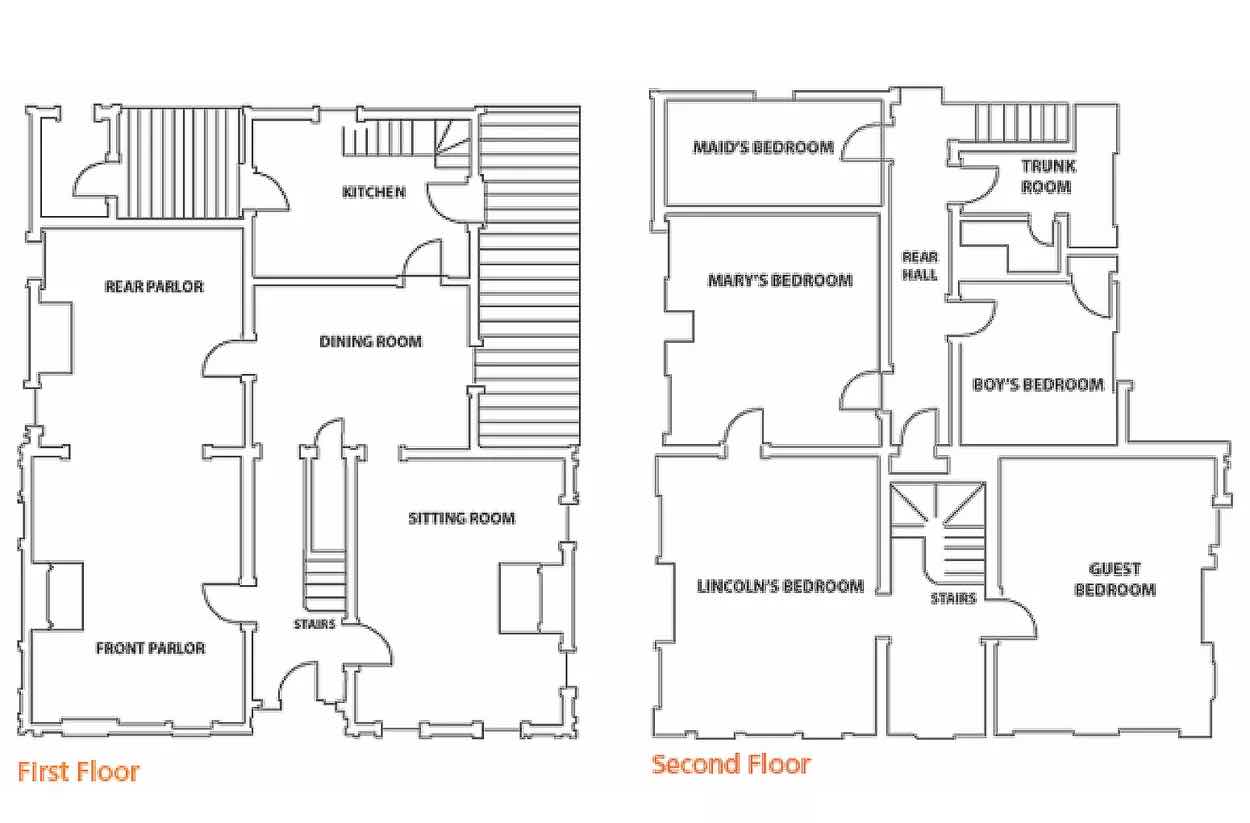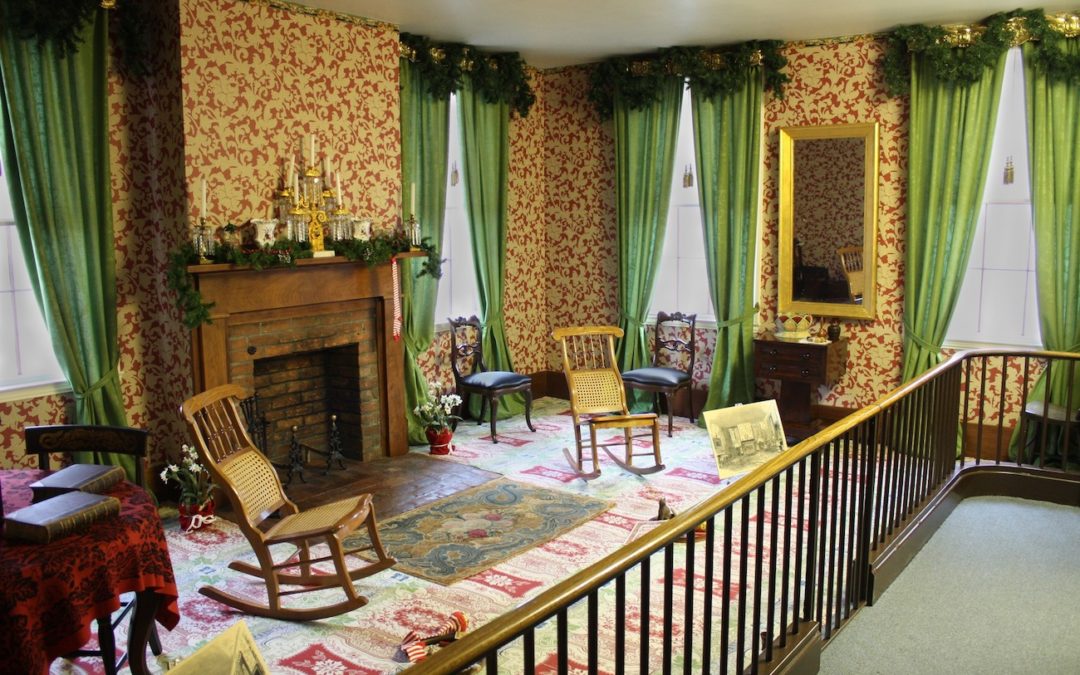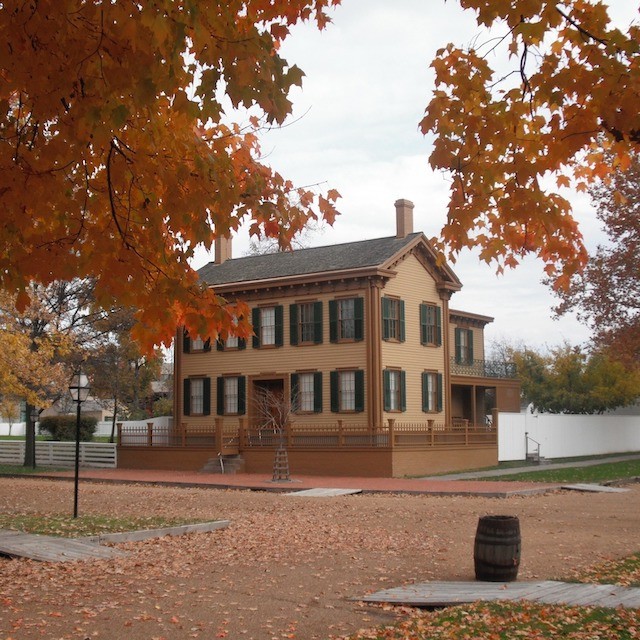With Feb. 12, 2022, being the 213 anniversay of the birth of President Abraham Lincoln, we thought we would take a look at the home where the namesake of our company raised his family.
The Floor Plan of Abe Lincoln’s Home
The idea of a family home in the days of Lincoln would often start small and grow with additions as a family’s wealth and size required. This was the case with the Springfield home of Abe and Mary Lincoln. The three-room home with a “sleeping loft” on the second floor became their first home together.
Downstairs, the original home had a large kitchen and formal dining room. Today, we would recognize this as an open floor plan, incorporating the living/family and kitchen into one larger space.
As the family grew to include their three sons, the Lincolns added a “master bedroom” on the first floor, which later became a parlor and later still Abe Lincoln’s study.
By 1855, the Lincolns built a real second story to the home to create bedrooms for their sons and a his/her master suite for themselves. From the his/her bedrooms of the master, Lincoln wrote his campaign speeches and Mary used her space for sewing and to nurse her migraines.
Despite the updates and additions, the home never had indoor plumbing and the kitchen remained a rustic cooking operation with an open hearth.
The Lincolns moved to Washington in 1855, leaving tenants in the home. At his assassination in 1865, the house was a destination for mourners and ultimately required military protection to keep visitors from taking keepsakes from the house, yard and even walls.
Mary Lincoln never returned to the home in Springfield. Her son, Robert, tired of being an absentee landlord, deeded the home to the State of Illinois for $1 in 1887. It has remained a historic landmark ever since.
Thanks to the National Park Service for a description of the Springfield Lincoln Home.



The Honest Abe Lincoln Plan – A Versatile Floor Plan Presented by Honest Abe Log Homes
Honest Abe Log Homes has honored its namesake with a traditional and thoroughly updated version of the Lincoln’s Springfield home.
This 2,062-square-feet, two-story home has the traditional covered porch entrance with plans including a covered porch at the rear of the home. The second story sports two bedrooms and a loft area with a small office space. The floor shares one full bath with Jack and Jill sinks to make for efficient use of the bathroom.
The first floor includes an ensuite master bedroom to the left of the entrance hall. The spa-like bath and large walk-in closet would be the envy of Mary Lincoln’s eye and the envy of people in 1850s.
To the right of the entry is the living room with a fireplace that rises the full two stories. Behind the living room, the kitchen included a separate laundry room, a power room and a pantry.
The open floor plan may be reminiscent of the Lincoln’s home, but the chef-style kitchen is a definite upgrade to the creativity of today’s chefs and home cooks.
The Lincoln Home Still Stands and is Open to the Public
The Lincolns bought a small Greek Revival-style house at the corner of Eighth and Jackson Streets in Springfield. It had three rooms on the first floor and sleeping lofts upstairs. As their fortunes and family increased, they added a bedroom on the first floor. It later became the back parlor.
The large kitchen was split into a formal dining room and kitchen. Mary’s sisters believed that this ruined the kitchen. But Mary believed her sons would not learn good manners by eating in a kitchen. Mary’s transfer-print ironstone dinnerware was sturdy, relatively inexpensive, and added a touch of elegance to the table.
From 1855-56, the Lincolns added the second story with three bedrooms and a master ‘his and hers’ bedroom suite. Visitors, some of whom came for several months, enjoyed the sunny guest room filled with mahogany furniture.
Oldest son Robert had his own room for a few years before going to prep school and college. When he left, his younger brothers Willie and Tad moved from the trundle bed in their mother’s room to Robert’s room. This gave Mary more room for her sewing, privacy for dressing, or solitude for enduring her frequent migraine headaches.
Having his own room meant Mr. Lincoln could do legal or political work at a desk in his room. The two-room suite gave privacy for bathing as there was no indoor plumbing yet. It also prevented the Lincolns from disturbing each other with their different schedules. Mr. Lincoln often worked well past midnight writing letters and speeches, especially as his inauguration approached.
Mrs. Lincoln might need to rise early to do the daily cooking and baking, and get the children to school. After Mr. Lincoln was nominated for the presidency in May 1860, the house was overrun with newspaper reporters and well-wishers trying to learn more about Lincoln.
That summer, Frank Leslie’s Illustrated Newspaper sent a reporter and artist to sketch the public rooms of the Lincoln home. Although many of the Lincolns’ original furnishings do not survive, the newspaper drawings gave researchers information to closely match the appearance of those rooms. A set of stereocards from 1865 were also useful to confirm some of the furniture’s appearance and provided views of wallpaper, carpeting and drapes.
After the Lincolns Left
The Lincolns rented the house to the Lucian Tilton family when they left for Washington. As the Tiltons bought most of the Lincolns’ furniture, the house remained nearly unchanged inside and out for several years. However, they added to the kitchen.
When Lincoln was assassinated in 1865, the Tiltons accommodated hundreds of mourners visiting the house, taking pictures, or snatching a leaf or a blade of grass from the lawn and trees. Mrs. Tilton had to ask for military protection around the house when people started taking paint off the clapboards and bricks from the retaining wall. After the Tiltons moved to Chicago in 1869, the house continued as rental property for several years. After Mary’s death in 1882,
Robert, who lived in Vermont, tired of being an absentee landlord and fighting with a tenant who had turned the first floor into a paying museum. Robert deeded the house to the State of Illinois in 1887 for $1. His only stipulations were that it be kept in good repair and “free of access” so that anyone who wanted could visit his father’s house.
The State conducted an extensive restoration from 1952-54 to open the upstairs to visitors. In 1972, after years of coordination by local, state, and federal officials, the house was transferred to the National Park Service. Through the years, notable figures have visited Lincoln Home National Historic Site, including many U.S. Presidents.
This feature was created by Amy Green, CSllcConsulting.com.









